
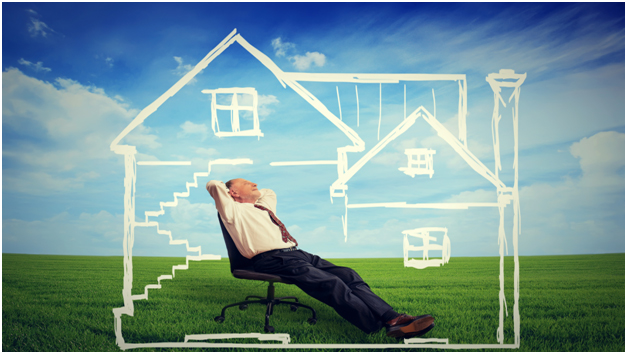
The senior citizen population (defined as people aged 65 years and older) is growing steadily as advances in health and technology facilitate longer lifespans.
In fact, the U.S. Census Bureau projects the 65+ age group will outnumber children for the first time ever by 2030.
Rather than relying on the services of a nursing home, most seniors would rather spend their later years in the comfort of their own homes. However, this can be a worrisome prospect for loved ones because seniors living independently can face a vulnerable situation when it comes to maintaining their safety and security.
Taking proactive measures can reduce potential hazards and create an atmosphere of advanced security for elders residing in their own domiciles.
There are many risk factors that need to be considered:
- Seniors facing physical limitations are often at high risk for slips or falls which can cause serious injuries.
- Decline of mental faculties can make it difficult for some seniors to properly care for themselves in solitude.
- A wide variety of miscellaneous factors coupled with the above risks can create an atmosphere of unforeseen danger to these beloved family members and friends.
Fortunately, most areas have at least one Agency on Aging, which is an excellent resource for providing seniors and their families with valuable advice and support for senior safety at home.
The U.S. Department of Veterans Affairs is also an excellent resource for veterans and their caregivers. It provides various options, including a “housebound allowance” for eligible seniors who are confined to their own homes for various health reasons.
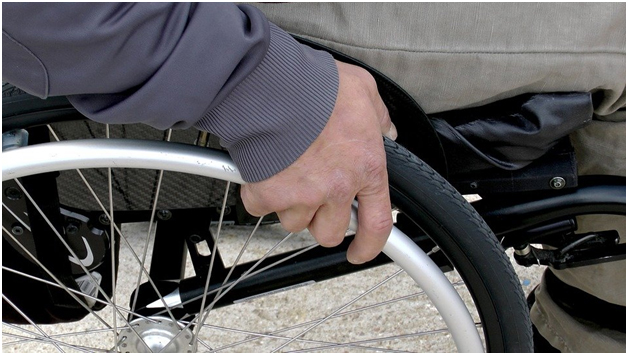
The Senior Citizen Population is Growing
As the elderly population grows, it creates a high demand for the services of live-in retirement homes.
- There are about 52 million people in America who are in the 65+ age group
- That number is expected to nearly double to a whopping 95 million American seniors by 2060
- Life expectancy will also continue to increase as people can live healthier for longer
- As evidenced by the expected tripling of numbers of those seniors of exceptional age (80 and above)
- Since 1950, the percentage of the population who are 65 and older has increased 111%
- Those numbers began spiking when baby boomers began turning 65 in the 2010s
- By 2030, all remaining baby boomers will have reached age 65+
Whether by choice or necessity, that means it is more difficult for seniors to find a place that offers care and support. The result is that more seniors are relegated to their own homes and when there, face many preventable risks.
Crimes Against Seniors
According to the Consumer Law Center, Inc. (CLC), the elderly are frequent targets of scammers, including telemarketing fraud and sweepstakes scams. Studies by the CLC show that “fraudulent telemarketers direct anywhere from 56 percent to nearly 80 percent of their calls at older customers.” After all, it is far easier to make victims out of those who may lack the capacity to recognize a scam for what it is.
While not dangerous in a physical sense, it is nonetheless important to shield seniors from those who would take advantage of them, whatever the crime, especially because they may not have the means to do so themselves.
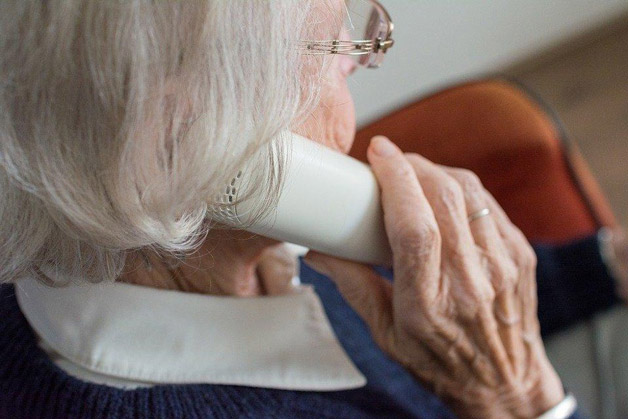
Phone scams
People in the age range of 65 years and older grew up in an era where they could take a person at their word. But unfortunately, criminals take advantage of that. Plus, seniors frequently experience some level of memory problems or even dementia. Scammers plan accordingly and constantly devise new methods to cheat the elderly out of their hard-earned money.
Physical abuse
It is unfortunate, but strangers are not the only people who seek to take advantage of beloved family members of advanced age. The very people you may hire to give loving care to your elderly family member (or even other members of your own family!) may not have the senior’s best interests at heart.
Beyond in-home monitoring, there are red flags that you can identify to offer a level of security and risk mitigation. Some of these warning signs include:
- an elder’s sudden unwillingness to discuss specific topics
- a noticeable decline in personal hygiene
- a lack of interest in activities that they formerly enjoyed
- differentiations in personality or behavior
Always keep a close eye, but especially if you have reason to believe any of the above situations are relevant. If you suspect an elder abuse situation, notify your local Adult Protective Services or law enforcement agencies about your suspicions and whatever evidence you have that will support your theory.
Keep in mind, it’s not necessary to have absolute proof of abuse. Even suspected abuse is cause for notifying the authorities, so the circumstances can be thoroughly investigated.
Remember, it is better to be safe than sorry – an individual’s safety and well-being may be at stake!
Government Protections for Seniors
The federal government has enacted several protections for senior welfare. The HIPAA website outlines rights to privacy when it comes to medical information. MedlinePlus is a solid resource for information on drugs, supplements, and medical conditions in general.
For those suffering from disabilities, the ADA National Network “provides information, guidance, and training to assure equality of opportunity, full participation, independent living, and economic self-sufficiency for individuals with disabilities.”
The U.S. Senate website and the U.S. House of Representatives website can also direct seniors to relevant congresspeople, and their own websites detailing contacts who can assist in getting senior care.
Never be afraid to fight for the rights of your loved ones, especially when they lack the capability to fend for themselves. Being an advocate can ensure that your family member enjoys security and peace of mind.
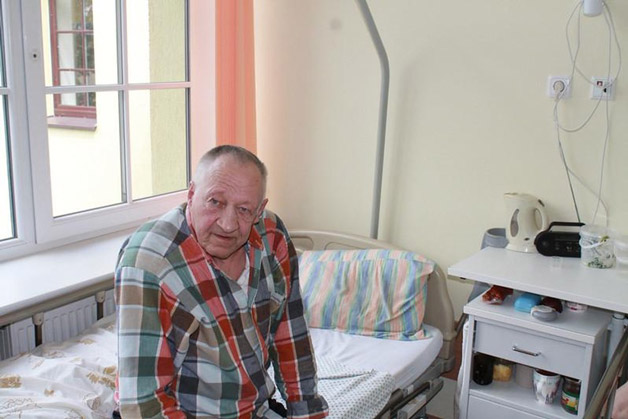
Understanding Home Hazards
Everyday physical and mental tasks become much more challenging as people age. It’s a natural result of the human condition. A little foresight and care will ensure that your loved one has an acceptable level of safety and security in their own home.
Some common hazards that can be mitigated are:
- General loss of flexibility and mobility, resulting in potential falls
- Common household items located where they can become trip hazards
- The process of getting out of bed
- Getting in and out of the shower or bath
- Wandering into dangerous situations (increased exponentially by memory loss or mental impairments such as dementia)
Injuries from seniors falling is, tragically, a common occurrence and may not always be preventable. However, it is possible to reduce opportunities for these accidents to take place.
In-Home Care from Relatives
A relative who is willing to help an aging person to remain in their home can be an invaluable resource.
According to the National Alliance for Caregiving and the AARP:
- It’s estimated the services that family caregivers provide to aging loved ones are worth about $375 billion a year
- 29% of Americans help provide home care; that’s about 65 million people
- Generally, in hours per week, a minimum would be 20 hours but can go up to full-time 24/7 care
In-home care is generally considered the best option, because with attentiveness, many dangerous or risky situations can be averted.
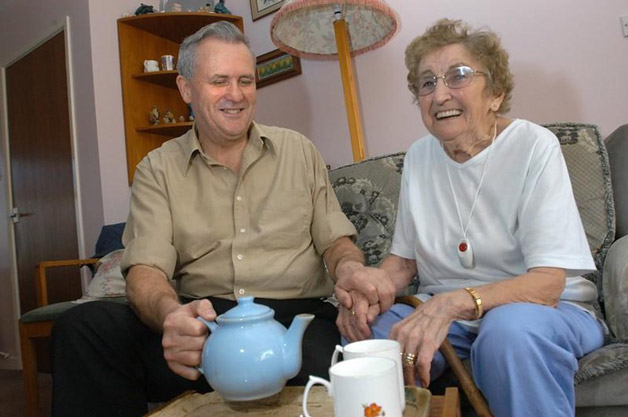
Hiring Caregivers to come to the Home
There are many levels of senior caregivers, both medical and non-medical professionals. Your best option for home care depends largely on the mental and physical health of the senior.
If you have experience in caring for a senior, you can make a list of necessary requirements on a “to-do” list. Then you can work with the seniors’ doctor or nursing staff to develop a plan. The plan will include what needs to be done and which professionals are needed for optimal care.
Remember to be an advocate for your loved one. There are many circumstances where health care professionals do not perform their jobs adequately. Keep an eye out for the warning signs and investigate potential candidates.
Senior Home Safety Products
A senior citizen’s home needs accommodations to ensure safety.
Here are some products designed to make this task easier:
Shower seats and Rails
These help to prevent slip and fall accidents in the bathroom.
Non-slip Bathroom Mats
Provide additional assistance with maintaining balance and avoiding dangerous slips. Ensure they do not themselves become a trip risk!
Medical Alert Systems
Typically monitored by emergency medical technicians or other certified operators, a medic alert system allows two-way communication with the senior plus state-of-the-art technology to help rescuers locate the person quickly.
Anti-Scalding Devices
This technology is designed to limit hot water temperatures to prevent injury while doing chores or bathing.
Home security systems
Unfortunately, criminal actions are not limited to the telephone. Sometimes burglars target the elderly because they view them as an easy score. A security system can provide quick notification of incidents, prevent entry, and notify first responders as necessary.
GPS-enabled Watches
These smart devices can be invaluable if a senior becomes lost or disoriented as they allow family or emergency crews to locate them quickly and efficiently.
Security cameras
Security cameras with WiFi connectivity can help monitor the home and general well-being of the senior, both inside and out, by detecting risks or any incidents visually. This is especially true if the elder is unable to acquire assistance on their own.
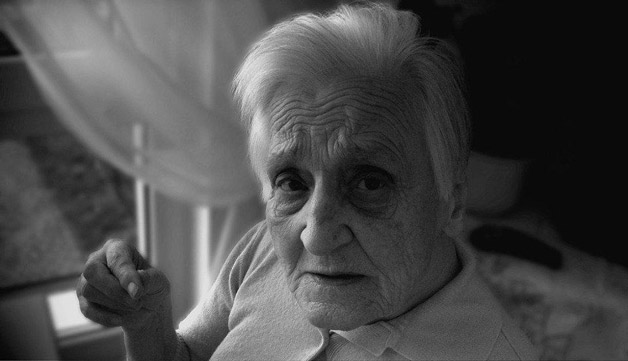
Considering whether to Install Security Cameras
Often, security cameras are viewed as a violation of privacy, and this can cause controversy. However, security cameras allow family members to quickly check on a senior multiple times a day without causing an interruption. In the event of an emergency, precious time can be saved by promptly alerting authorities.
Some cameras even have the capability for direct communication with the individual, so they can easily inform you about their needs or any issues that arise.
Be wary of some potential downsides with the use of security cameras:
- The senior has no interest in being monitored or watched, perceiving a violation of privacy. Bear in mind, the senior must give consent to the installation of cameras.
- While security cameras are becoming more and more affordable, keep in mind there is also a cost associated with setup and installation. Fortunately, many can be installed with basic tools and know-how to monitor seniors on a computer, smartphone, or other devices.
Questions to Answer Before Installing Home Cameras
Your finances, budget, and general logistics are determining factors when considering your options.
For best results, decide which areas need to be viewed remotely through the cameras and which areas should not, to determine how many cameras are needed to perform the job efficiently.
Even if you plan to do the install yourself, you may want to bring a professional in to suggest the best camera layout to get the most bang for your buck and the best security coverage for your loved one.
Home Security Monitoring Options for Seniors
Of course, home security cameras are a popular choice when considering a monitoring system for seniors, and many people additionally spring for motion detectors.
These include sensors that send an alert if they detect glass breakage, from an intruder for example. There are also sensors that alert users if temperatures have dropped and there is a risk of pipes freezing and bursting or if there are rising temperatures, or whether there is smoke present.
Medical alert systems are also a common monitoring option and allow seniors to send a signal they are having a health crisis or some other sort of emergency.
Emergency medical technicians monitor many of these and provide two-way talk capabilities so that first responders can send the proper type of assistance to the senior in need.
Types of Cameras
There are various types of cameras on the market today, including two-way audio security cameras, Pan Tilt Zoom (PTZ) cameras, fixed cameras, and 360-degree cameras.
PTZ cameras can pan, tilt, and zoom in on an area or a person. The zoom range will vary by camera model and price point.
Fixed cameras are the most common choice and typically don’t have any moving parts but can be positioned in one spot that can always see a set area.
The third type of camera is a 360 Degree security camera, which provides the most comprehensive, complete views of a room in every direction aside from obstacles (e.g. dressers, doors).
Where to Install Security Cameras
Once you decide which type of camera(s) is best, choosing where to install it (them) is the next critical step.
Every home is different, so it is essential to decide what areas are most vulnerable to a fall or other accident. While circumstances vary from house to house, stairways are usually a crucial place to put a camera. Stairs are dangerous in general but can be even worse for seniors, especially if they are slippery and/or the rail is unreliable and flimsy.
The kitchen is another important location to put a camera, due to the potential of a fire hazard. Installing a camera in the kitchen not only helps in fire mitigation, but also serves as a check to ensure regular meal consumption.
Doors are also critical spots to monitor, as they can both detect a loved one going in and out and catch unwelcome intruders in the home. Many thieves enter through the front or back door, so it is good to set up cameras at these locations. But, of course, these will also allow users to see welcomed visitors, including home-health staff.
Where to Put a Home Camera
Some types of cameras are better suited for certain applications than others
For instance, standalone cameras can be placed on desks, shelves, and tables and are easily movable and adjustable.
On the other hand, mounted cameras can be placed on walls and ceilings and should always be positioned properly and sturdily to prevent the equipment from shifting, slipping or falling.
Outdoor cameras should generally be mounted up high to prevent theft or external manipulation.
Consider a combination of standalone and mounted cameras to cover entire areas and ensure the capture of all necessary footage.
Best Camera Placement for Function and Visibility
Here are some best practices for camera usage:
- Mount cameras 8-10 feet off the ground.
- Don’t point cameras at lights as the glare can interfere with visibility. Seek indirect light.
- A visible camera is a great deterrent for criminal activity but is a vandalism risk. Consider the best of both worlds: a fake camera for visibility and a real hidden camera to avoid theft or vandalism.
- While a top-of-the-line outdoor security camera is usually water and weather-proofed, it is still a good idea to mount them under eaves or other protected areas.
Indoor Camera Placement
- Hanging indoor cameras in an upper corner of a room usually gives you the most comprehensive view of the area.
- Be aware that pointing an indoor camera through a window to get an outside view might hurt the overall quality – an outdoor surveillance camera is more effective for capturing that environment.
- If there’s no other choice other than pointing an indoor camera outside, then install it, so the lens is as close as possible to the glass.
- Many security cameras have infrared (IR) light technology. IR helps both with motion detection and lets the camera record in low light conditions. Unfortunately, IR technology can reflect off windows or other reflective surfaces and ruin video quality.
Interior: Main Stairway or Hallway
Placing a camera in the main places the senior will walk through regularly is a good idea as it could indicate whether a fall has taken place and also makes it difficult for intruders to move about the home undetected.
If someone does break in through a bathroom, bedroom, or another unmonitored area, they’ll still be seen on camera if they move through halls or up stairways in the house.
Outdoor Camera Placement
Front Door
Side or rear entrances can be the top choice for burglars, but statistics show that 34% of break-ins start at the front door. This is also where porch pirates like to strike and snag deliveries.
A camera at the main entrance keeps tabs on everyone who comes in and out, including your loved one, caregivers, neighbors, maintenance people or those with malignant intentions.
Video doorbells are excellent picks for the front door. They can serve as both the primary camera and along with another outdoor camera aimed at the yard or garage.
Back and Side doors
Efficient placement is to have cameras at secondary doors, in addition to the primary entrance and exit.
Garage and Driveway
The garage can be an easy entry point for intruders if it’s detached or the door is accidentally left open, so it’s good to have security camera coverage of the garage.
Also, a driveway cam allows viewers to see if someone is approaching
Areas Where You Should Not Install a Surveillance Camera
Facing Your Neighbor’s Private Property
To present yourself as a good neighbor, security cameras should never have a view of a neighbor’s home or yard as this is a violation of privacy. Limit the view at most to a limited part of a shared property line.
Bedrooms and Bathrooms
No matter how well-intentioned, these areas come with an expectation of privacy and should not have cameras installed in them.
Motion detectors and glass break sensors are a much better choice, as are personal medic alert systems.
Look for User-Friendly Devices with Options to Expand
Home security systems on TV sometimes look like a real hassle to use and maintain, but this is far from the truth. Many devices on the market are very user-friendly and don’t require much setup or maintenance. However, intricate home security systems can take a while to install and should be done by a professional.
Keep in mind that poor lighting can affect the quality of a camera feed, so it is critical to position any camera where it can have optimum indirect light to see the senior and the full room clearly.
Lastly, consider the price and the budget.
Expert Tips for DIY Security Camera Installation
- Be sure all the equipment is working before mounting the cameras.
- Once you can see the cameras are working, do a test run by taping or even having a helper hold the camera in the intended position to be sure the view is what you’re planning.
- Check to ensure the location is receiving a strong enough Wi-Fi signal.
- Only use hardware and tools approved to install your cameras.
- Outdoor cameras will get dirty from dust or pollen, so plan for regular cleaning and maintenance. Upkeep is very important!
Make Use of Live Streaming and Monitoring
Investing in a home security system for seniors will allow loved ones to watch in real-time for peace of mind. Live viewing is handy when a loved one is engaged in a possibly dangerous activity like cooking or going up and down stairs.
The ability to monitor a senior while they are at home brings comfort that they are doing well, and no accidents have occurred.
To easily set up cameras to view over the internet, we recommend using IP cameras or NVR that allow users to scan a QR code into their smartphone to view the camera.
Enable Life-Saving Communication with Two-Way Talk Features
Remember that the two-way talk features of medical alert systems can get seniors the type of help they need, which also applies to cameras. Being able to verbally communicate with a senior loved one from a remote location can help users be determine if they are well or need help.
Look for AI functions
You can find AI security cameras with smart motion detection which are useful in reducing false motion alerts by using human body and vehicle detection. Some cameras even offer Active Deterrence features such as a police style strobing light and siren to deter trespassers. If a trespasser is detected in the middle of the night, the camera will automatically sound a siren with lights. If your senior is living home alone, such automation can help thwart crime without any intervention.
Look for Integration with Smart Home Platforms
Many security cameras and systems can now be integrated with smart home platforms like Google Home and Alexa. On a basic level, users can arm/disarm cameras and turn alarms on and off, but more advanced cameras may also allow users to do more.
Final Thoughts
Overall, there are many considerations in deciding which type of home security system is right for you. In the end, it needs to be a good fit for both the caregiver and the individual being cared for. No matter what you decide, the peace of mind that comes along with a home security system is indisputable.
Popular Resources for the 65+ population:
- AARP
- Administration on Aging
- American Parkinson’s Disease Association
- American Pharmaceutical Association
- Assisted Living Store
- Center for Aging Services Technologies
- National Association for Home Care and Hospice
- National Association of Nutrition and Aging Services Programs
- National Association of Professional Geriatric Care Managers
- National Family Caregivers Association
- National Institute on Aging
- Administration for Community Living
- American Geriatric Society Home Safety Tips
- American Seniors Housing Association
- Assoc. for the Protection of the Elderly
- Family Caregiver Alliance
- National Aging in Place Council Recommendations
- National Council on Aging resources for seniors and caregivers
- National Family Caregivers Association SeniorNet
- Senior Resources - FirstGov.gov
- The FBI – Fraud Target: Senior Citizens
Senior Crime Prevention:
Prevent Financial Fraud
Financial Assistance for Seniors:
- Medicare Savings Program
- Medicaid, Supplemental Security Income (SSI)
- Supplemental Nutrition Assistance Program (SNAP)
SGENET / Pixabay
sabinevanerp / Pixabay
Senior Guidance / flickr
British Red Cross. / flickr
geralt / Pixabay
sabinevanerp / Pixabay

